Literary works Mudal Thiruvandaadhi | Honors azhwar | |
 | ||
Poigai azhwar
Poigai Azhwar (also spelt Poygai Alvar or Poigai Alvar or Poygai Azhwar) is one of the twelve azhwar saints of South India, who are known for their affiliation to Vaishnava tradition of Hinduism. The verses of azhwars are compiled as Nalayira Divya Prabandham and the 108 temples revered are classified as Divya desam. Poigai is one of the three principal azhwars, with the other two being Bhoothathazhwar and Peyazhwar, collectively called Muthalamazhwargal who are known to be born out of divinity. Poigai composed hundred verses that are classified as Muthal Tiruvandadhi and his composition is set in the Andhadhi style in which the ending syllable is the starting one for the next verse.
Contents
- Poigai azhwar
- Andam porrum azhwargal shree poigai azhwar
- Azhwars
- Early life
- Composition
- In culture
- References

According to traditional account, the first three azhwars belong to Dwapara Yuga (before 4200 BC). As per Hindu legend, Poigai was found in a small pond near the Yadhotakaari temple at Tiruvekkaa. In Tamil, small pond is called poigai, and since he was found in a pond, he got the name Poigai.
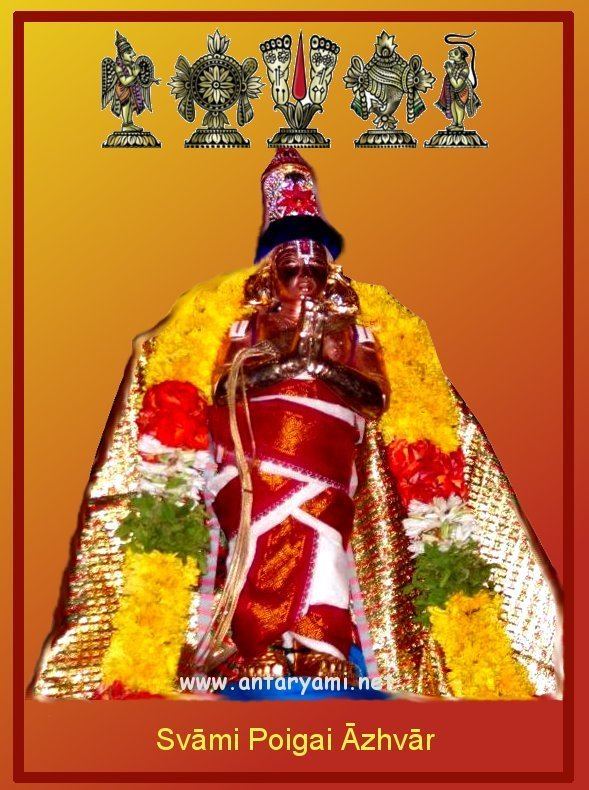
As per legend, the three azhwars were once were confined in a small dark enclosure during a rain in Thirukovilur and they experienced a fourth individual among them. They found out that it was god Vishnu and Poigai wished to see his face continuously but could view only from the simmering light of the lightening. With a view to maintain the continuity of light, he instantly composed hundred songs wishing light to emerge. The other two continued composing hundred songs each on Vishnu. The works of these earliest saints contributed to the philosophical and theological ideas of Vaishnavism. Along with the three Saiva nayanmars, they influenced the ruling Pallava kings of the South Indian region, resulting in changing the religious geography from Buddhism and Jainism to the two sects of Hinduism.
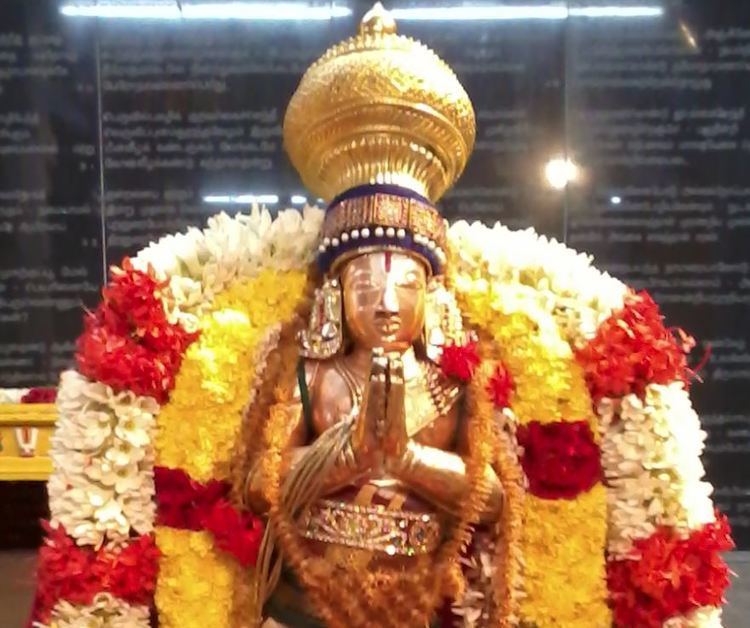
Andam porrum azhwargal shree poigai azhwar
Azhwars
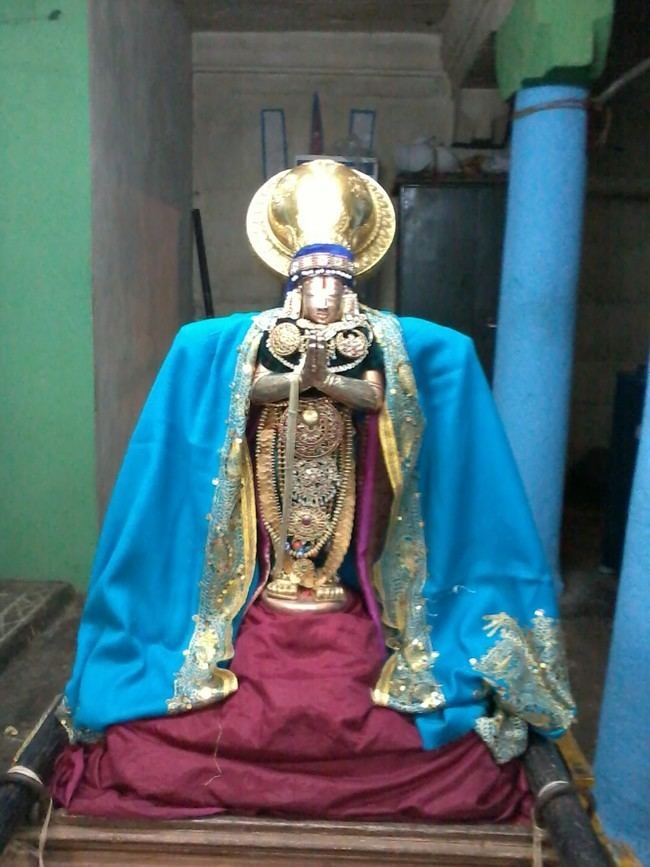
The word azhwar means the one who dives deep into the ocean of the countless attributes of god. Azhwars are considered the twelve supreme devotees of Vishnu, who were instrumental in popularising Vaishnavism during the 5th to 8th centuries AD. The religious works of these saints in Tamil, songs of love and devotion, are compiled as Nalayira Divya Prabandham containing 4000 verses and the 108 temples revered in their songs are classified as Divya desam. The saints had different origins and belonged to different castes. As per tradition, the first three azhwars, Poigai, Bhutha and Pei were born miraculously. Tirumizhisai was the son of a sage, Thondaradi, Mathurakavi, Peria and Andal were from brahmin community, Kulasekhara from Kshatria community, Namm was from a cultivator family, Tirupana from panar community and Tirumangai from kazhwar community. Divya Suri Saritra by Garuda-Vahana Pandita (11th century AD), Guruparamparaprabavam by Pinbaragiya Perumal Jiyar, Periya tiru mudi adaivu by Anbillai Kandadiappan, Yatindra Pranava Prabavam by Pillai Lokacharya, commentaries on Divya Prabandam, Guru Parampara (lineage of Gurus) texts, temple records and inscriptions give a detailed account of the azhwars and their works. According to these texts, the saints were considered incarnations of some form of Vishnu. Poigai is considered an incarnation of Panchajanya (Krishna's conch), Bhoothath of Kaumodakee (Vishnu's Mace/Club), Pey of Nandaka (Vishnu's sword), Thirumalisai of Sudarshanam (Vishnu's discus), Namm of Vishvaksena (Vishnu's commander), Madhurakavi of Vainatheya (Vishnu's eagle, Garuda), Kulasekhara of Kaustubha (Vishnu's necklace), Periy of Garuda (Vishnu's eagle), Andal of Bhoodevi (Vishnu's wife, Lakshmi, in her form as Bhudevi), Thondaradippodi of Vanamaalai (Vishnu's garland), Thiruppaan of Srivatsa (An auspicious mark on Vishnu's chest) and Thirumangai of Saranga (Rama's bow). The songs of Prabandam are regularly sung in all the Vishnu temples of South India daily and also during festivals.
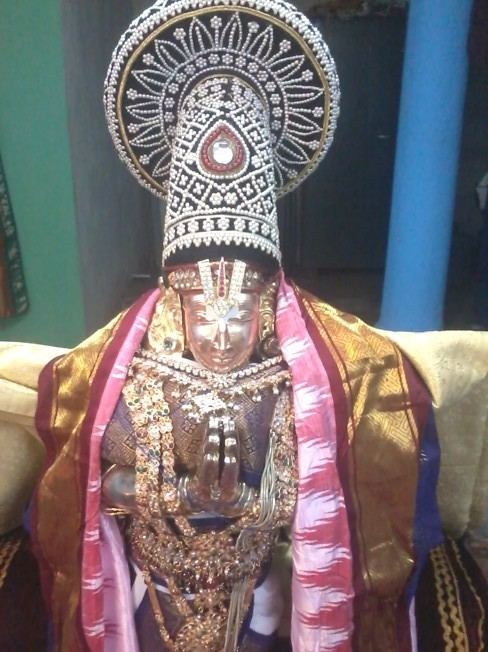
According to traditional account by Manavala Mamunigal, the first three azhwars namely Poigai, Bhoothath and Pey belong to Dwapara Yuga (before 4200 BC). It is widely accepted by tradition and historians that the trio are the earliest among the twelve azhwars. Along with the three Saiva nayanmars, they influenced the ruling Pallava kings, creating a Bhakti movement that resulted in changing the religious geography from Buddhism and Jainism to these two sects of Hinduism in the region. The azhwars were also instrumental in promoting the Bhagavatha cult and the two epics of India, namely, Ramayana and Mahabaratha. The azhwars were instrumental in spreading Vaishnavism throughout the region. The verses of the various azhwars were compiled by Nathamuni (824-924 AD), a 10th-century Vaishnavite theologian, who called it the "Tamil Veda".
Early life

Poigai was found in a small pond near the Yadhotakaari temple at Tiruvekkaa. In Tamil, small pond is called poigai, and since he was found in a pond, he got the name Poigai. At Kanchipuram there is a temple inside the Deva-sarovara lake. This temple enshrines an idol of Saroyogi in a recumbent posture with eyes closed in meditation. From childhood, Poigai was deeply devoted to Vishnu. He mastered all the Vaishnava speeches and followed Vaishnavite tradition. He was variously known as Ayonigi, Saro-yogi, Kasara-yogi, Poigai-piraan, Saravora Munindra and Padma-muni.
Composition
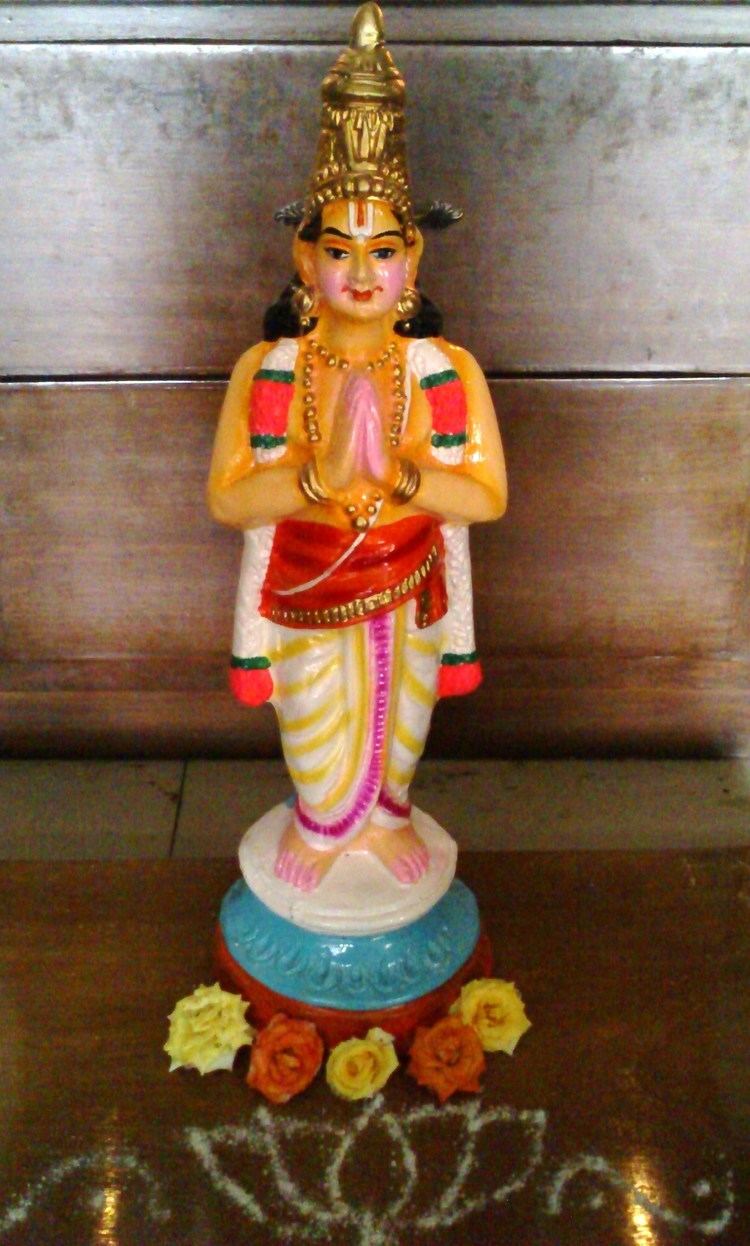
As per Hindu legend, Vishnu appeared to the mudhal azhwars (first three azhwars) at Thirukkoilur. It was day time, but it darkened and started raining heavily. The wandering Poigai found out a small hide out, which has a space for one person to lie down. Boodath arrived there looking for a hiding place and Poigai accommodated him, with both sitting together. In the meanwhile, Pey also came to the same place as all the three preferred to stand because of lack of space. The darkness became dense and inside the small room, they were not able to see each other. In the meanwhile, they felt a fourth person also forced his way among them. The three azhwars realised from the light of the lightning that the fourth one had a charming face that was sublime and divine. The trio could immediately realize that it was Vishnu who was huddling among them. Poigai wished to see Vishnu's face continuously but could view only from the simmering light of the lightening. With a view to maintain the continuity of light, he instantly composed hundred songs wishing the earth to be a big pot full of ghee like an ocean where the Sun could be the burning wick.
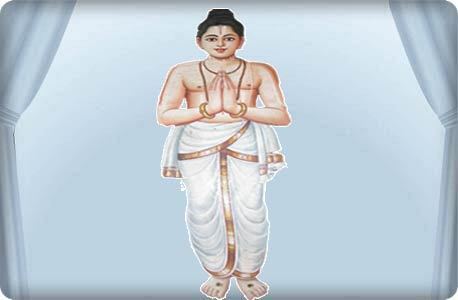
The song is also interpreted as the azhwar praying to god to remove the darkness and ask for his unlimited knowledge and power. Bhoothathazhwar also sang 100 songs imagining to light the lamp constantly through ardent love for Him. Peyazhwar sang another 100 songs where he described the enchanting charm of the divine face and the association of Narayana equipped with chakra and sankha, and his divine consort goddess Lakshmi.
Poigai composed hundred verses that are classified as Muthal Tiruvandadhi. Poigai’s composition was set in the Andhadhi style. The word Andha means end and Adi means beginning. Andhadhi style has ending word or the syllable of each verse as the beginning word of the succeeding verse and the last word of the hundredth verse becomes the beginning of the first verse, making the hundred verses a true garland of verses. The works of these earliest saints contributed to the philosophical and theological ideas of Vaishnavism. The verses of the trio speak of Narayana (another name for Vishnu) as the supreme deity and they refer frequently to Trivikrama and Krishna, the avatars of Vishnu.
In culture
There is a shrine dedicated to Poigai in the Yathothkari Perumal Temple tank called Deva Sarovaram where his image is depicted in reclining posture. Poigai has revered Sri Ranganathaswamy Temple in one, Thirupaarkadal in one, Tirumala Venkateswara Temple in ten, Thiruvikrama Perumal Temple in two, Vaikuntha in two and Tiruvekkaa in four verses. Azhwar Utsavam is a festival celebrated annually during the birth date of the saint based on Tamil calendar in the Yathothkariswami temple at Tiruvekka.
